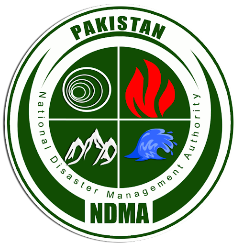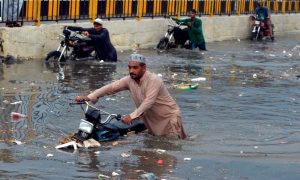With the most recent downpours still battering the megacities, the death toll in Pakistan following five weeks of monsoon rains and flash floods increased to 300. National Disaster Management Authority (NDMA) reported that since June 14, the extensive precipitation has flooded waterways, destroyed bridges, and damaged nearly 5,600 homes. The province of Baluchistan recorded the majority of the losses and injuries. Additionally, the northwest, which borders Afghanistan, the eastern province of Punjab, and the southern province of Sindh were also affected by the rain.
The annual monsoon flood brings misery and flooding to many cities, drawing criticism for the government’s lack of preparedness while the government constantly places the blame on the torrential rains. But which is it-poor governance or climate change?
The government perceives water governance as only governing the irrigation water due to the fact that approximately 95 per cent of Pakistan’s water is used for agriculture, with 60 per cent of its population directly involved and 80 per cent of exports based on these sectors. The most significant investment in improved water governance for Pakistan in recent decades-irrigation management transfer under the Punjab Irrigation and Drainage Authority (PIDA) Act of 1997-ended with repeal in 2019.
Pakistan is a water-scarce country, despite possessing the world’s biggest glaciers and the world’s largest gravity-fed irrigation system, the Indus Basin Irrigation System (IBIS). Water demand is expected to drastically surpass availability as the population grows fast. As a result of this, and tense ties with the country’s neighbours over transboundary water resources, the country’s future security, stability, and sustainability are jeopardised. To avoid calamity, immediate coordinated planning and implementation are essential.
The problem in terms of domestic and industrial water supply is not so much water availability as it is the system of water management and governance.
With all of the natural resources required to thrive, Pakistan suffers due to parasitic politics, bad governance, and a never-ending blame game. There is no water metering in the nation, no limit established for family consumption, and the women and maids who are responsible for cleaning are extravagant with water usage. Furthermore, there is no water-grading system, which determines whether the quality of water may be utilized for a certain function such as cleaning, drinking, gardening, and bathing, among others. Now, when are streets are flooding with rainwater that otherwise can be harvested, there are memes about ‘More Rain, More Water’ to disparage political opponents. On the other hand, when the stakeholders are called for dialogue and an integrated solution, they save their souls by equivocating and then countering questions. The irony is that those who must be answering are questioning and vice versa.
If the water management hierarchy is considered, one can see that provincial governments in Pakistan are responsible for water and sanitation and in 2001 devolved responsibility for service delivery to local governments. There are a number of institutional actors are involved in water management and governance. The provincial Public Health Engineering Departments (PHEDs, Tehsil Municipal Authorities (TMAs), Water and Sanitation Agencies (WASAs) and some Community-Based Organisations (CBOs) along with Non-governmental organisations (NGOs) do the governance but with sparse access. According to the State Bank of Pakistan, the water sector in Pakistan is characterized by multiple authorities with overlapping responsibilities and duplication of work; as a result, the problem in terms of domestic and industrial water supply is not so much water availability as it is the system of water management and governance. TMAs and WASAs both suffer from a lack of capability in terms of human resources and management systems.
Greater investment in Pakistan’s water sector is the greatest choice for long-term social and economic growth and ensuring that no one falls behind in the development process. Pakistan requires a comprehensive and scalable national strategy that establishes the foundation for balanced socio-economic growth, management, and conservation of the country’s water resources (saline and fresh) in a climate-change-affected environment. Water, if addressed, has the potential to be an engine of economic growth and regional commerce expansion, the blue economy has the potential to increase total annual GDP by three folds.







